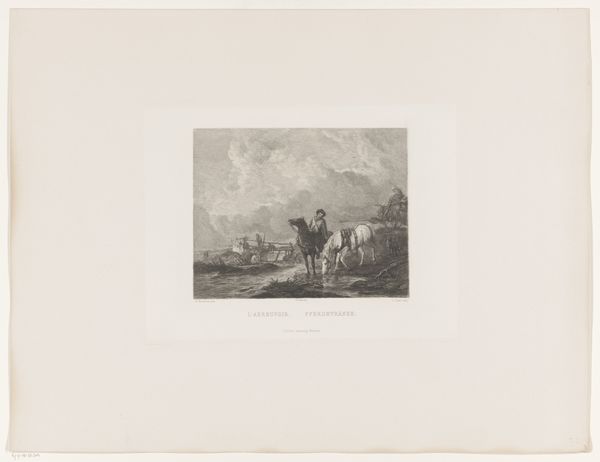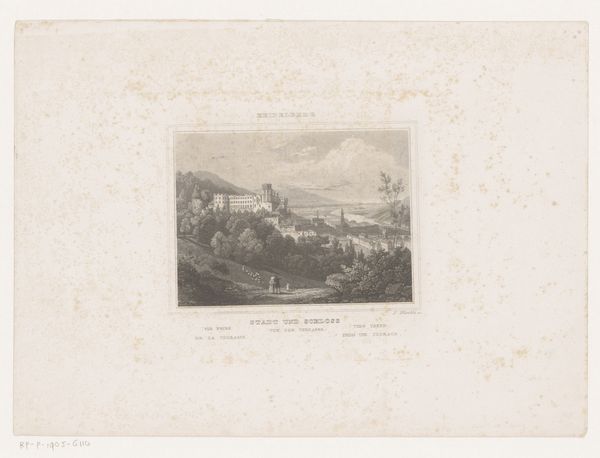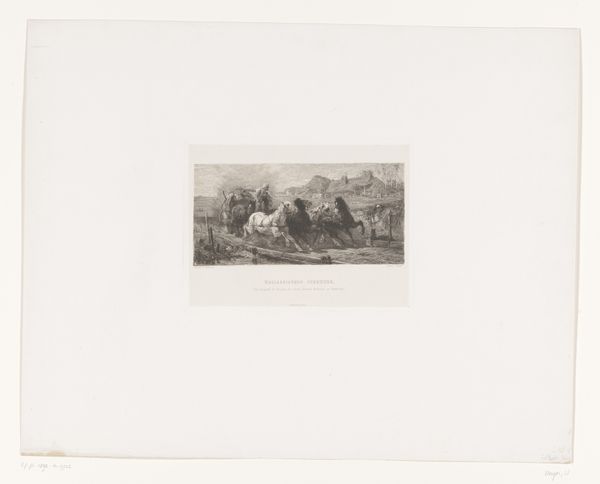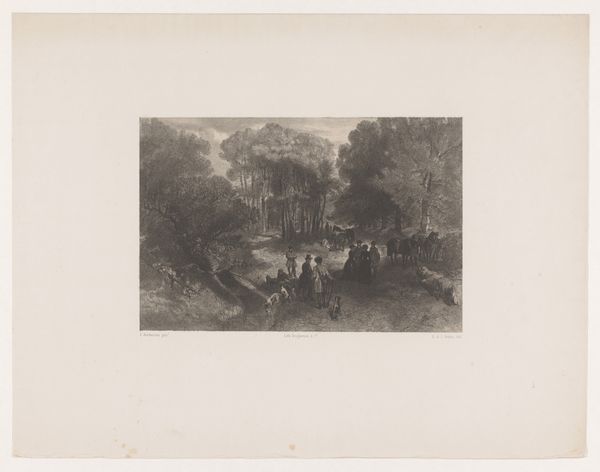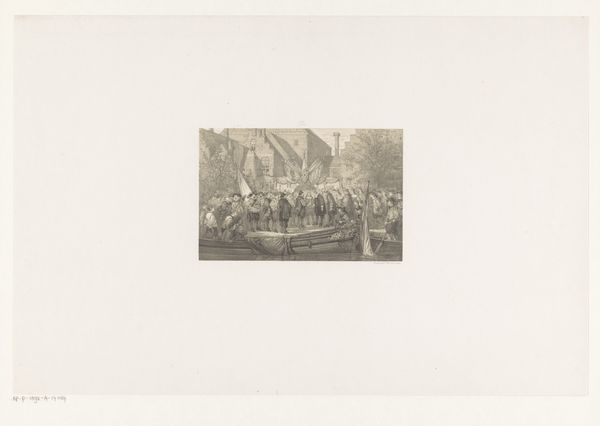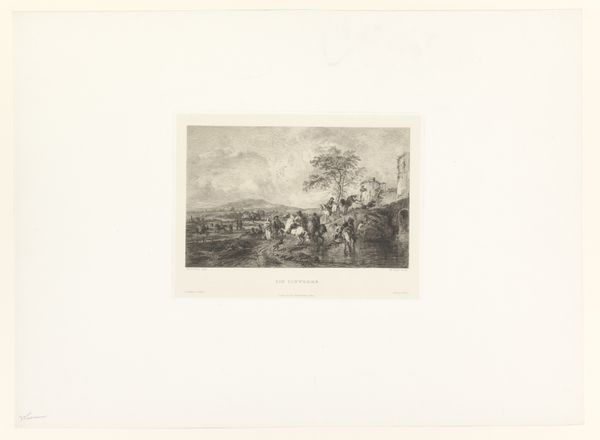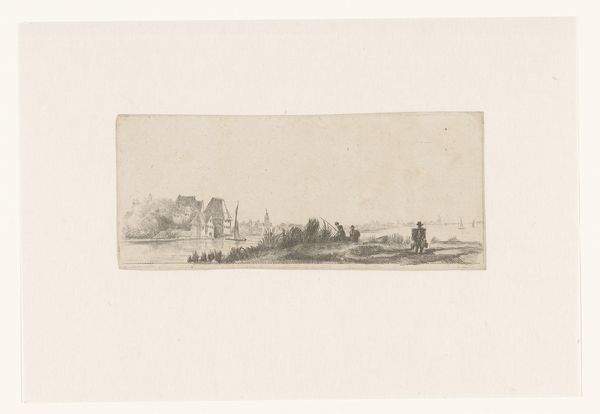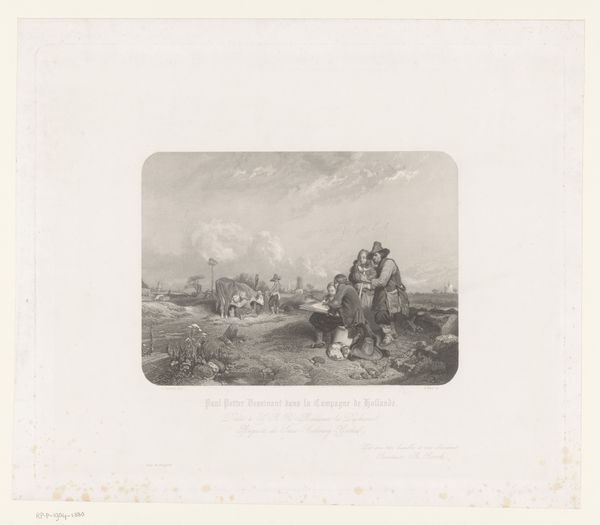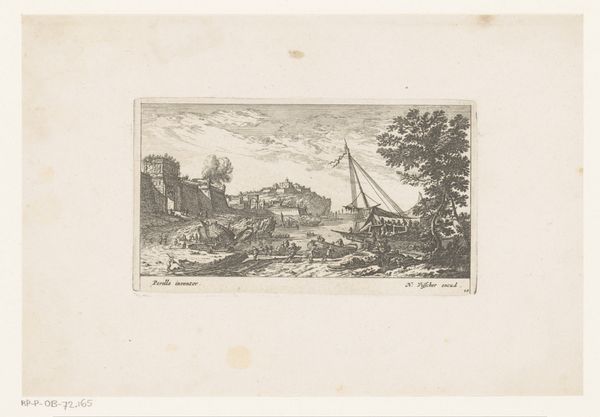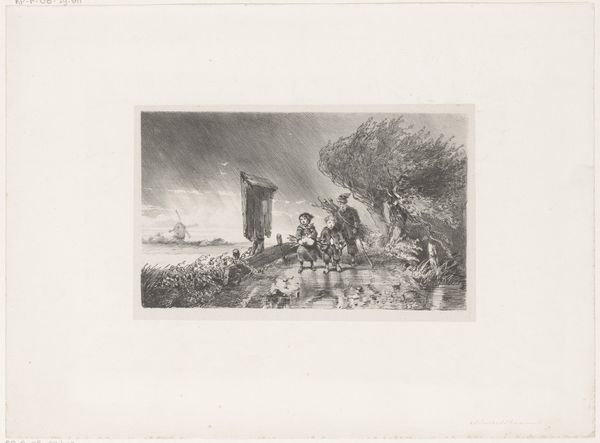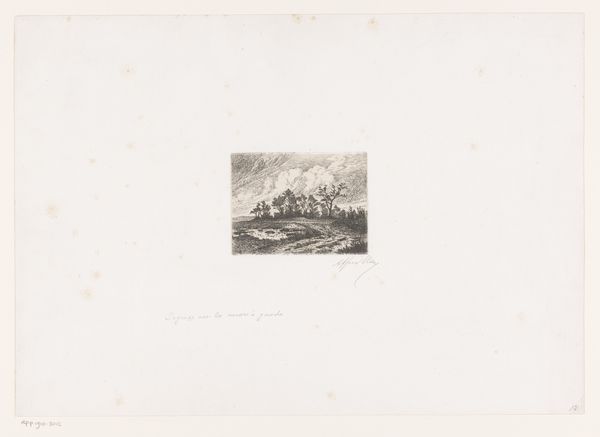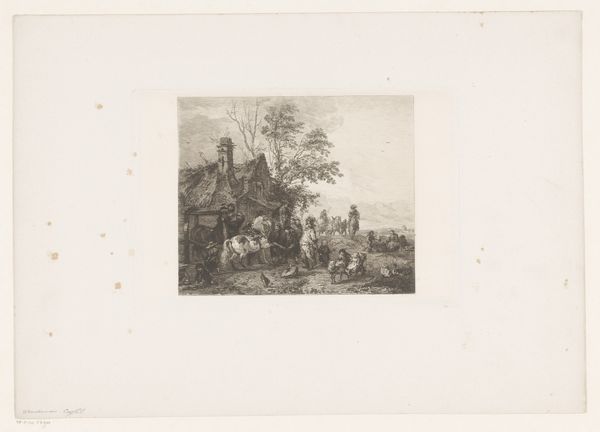
Laden van een schip ten behoeve van hulp aan de koning van Zweden 1876
0:00
0:00
Dimensions: height 355 mm, width 535 mm
Copyright: Rijks Museum: Open Domain
Curator: It is necessary to understand "Laden van een schip ten behoeve van hulp aan de koning van Zweden" (Loading a Ship to Aid the King of Sweden) made by Johan Conrad Greive in 1876. This is a print, specifically an engraving. Editor: Thanks! My initial impression is of the incredible detail in the engraving, especially considering it depicts such a bustling scene of labor. It really brings home the sheer number of people involved in this kind of logistical effort. How might we analyze this piece considering the medium, an engraving? Curator: Notice how the use of engraving itself is a form of labor, requiring skill and time. It’s not a quick, gestural medium like painting. The very act of creating this print emphasizes the production and distribution of goods as hard work; it is mirroring the events it illustrates. Editor: That’s fascinating, framing the creation of the art as a reflection on the labor depicted! Could the choice of making it an easily reproducible print also indicate something? Curator: Precisely! Prints allow for mass dissemination. The act of aiding a king becomes less about individual heroism and more about collective action made visible and multiplied through this accessible medium. This contrasts with the tradition of one-off heroic depictions that aggrandize an individual. Think about who this print would have been made for. Who consumes these kinds of images? How would they circulate? Editor: So it democratizes the image, allowing for broader engagement with the depicted social activity. Perhaps, romanticizing genre painting makes it feel a bit different than other works produced during that period. I now look at the work with a new view of it showing off the beauty and labour during this period of romanticism and industrialization. Thank you! Curator: Exactly! By investigating its mode of production, and considering the social and economic context in which it was created, it tells a more multifaceted story.
Comments
No comments
Be the first to comment and join the conversation on the ultimate creative platform.

